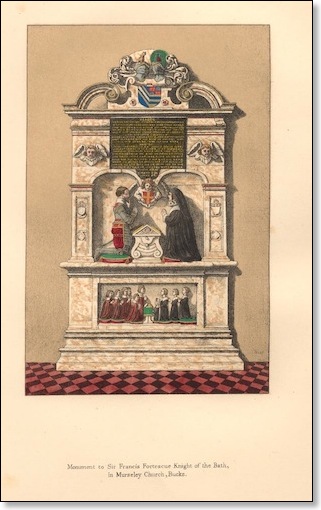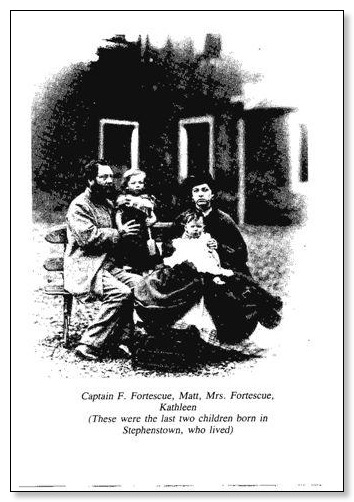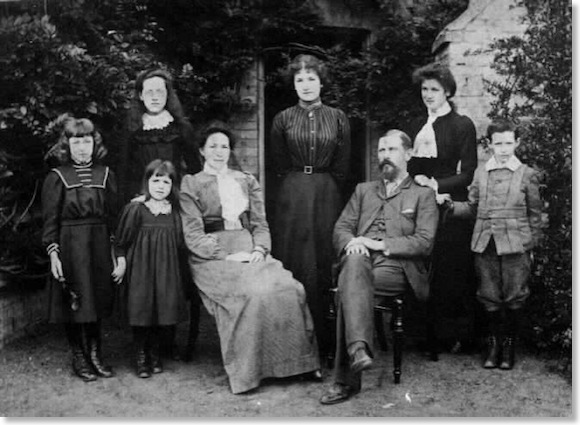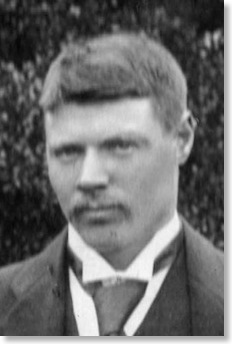Florean fortescue's (Curiosité)
Encyclopaedia Potterica
Florean Fortescue's Ice-Cream Parlour - a shop on Diagon Alley
DIAGON ALLEY Harry Potter BAG PURSE! 2 sided w/ SHOPS!
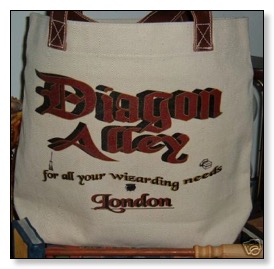

DIAGON ALLEY
"Can we buy all this in London?" Harry wondered aloud.
"If yeh know where to go," said Hagrid.
~Harry Potter and the Sorcerer's Stone
MAKES A UNIQUE AND MAGICAL HOLIDAY GIFT!!!
Back in stock after three months!
This generous size bag, with leather-like handles and bottom, has plenty of room for all your potions ingredients and books! Measures 11 ½” high, not including the handles which add 7”. This adorable bag is 13” across.
(Books and other cool stuff not included. See Ollivander's and Flourish & Blotts if you wish to purchase these items.)
Front reads: Diagon Alley, for all your Wizarding needs, London (Broom, cauldron and books pictured)
Back reads: Flourish and Blotts, Madam Malkin’s Robes, Florean Fortescue’s, Magical Menagerie, Quality Quidditch Supplies, Eeylop’s Owl Emporium, Ollivander’s Wands.

Fish (Curiosité)
Species Summary for
Centropogon AustralisFortescue![]()
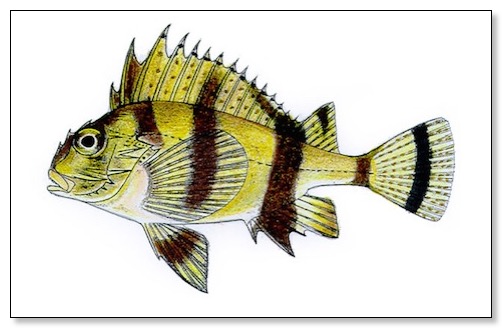
pencil-color illustration based on actual specimen.
by Yau, Bernard - 28.07.2000 
Locality: Gretas Reef
Date: 2006-12-20
http://fishbase.org/Photos/PicturesSummary.php?ID=6384&what=species
Australian Museum![]()
Fortescue, Centropogon australis (White, 1790) - Australian Museum
ANIMAL SPECIES:
Fortescue, Centropogon australis (White, 1790)
The Fortescue has a brown to white body with dark brown to black bars. It has two large spines on either side of the head that can be projected sideways when the fish is disturbed. The first dorsal fin has 16 strong spines that are capable of inflicting a very painful sting.
Standard Common Name
Fortescue
Identification
The Fortescue has a brown to white body with dark brown to black bars. It has two large spines on either side of the head that can be projected sideways when the fish is disturbed.
Size range
The species grows to 14 cm in length.
Similar Species
The Fortescue looks similar to the Soldier. Click on the link to the Soldier fact sheet on the right to find out how to tell them apart.
Distribution
The Fortescue is endemic to Australia. It occurs in temperate marine waters from southern Queensland to eastern Victoria.
The map below shows the Australian distribution of the species based on public sightings and specimens in Australian Museums. Source: Atlas of Living Australia.

Distribution by collection data
Ozcam map of Fortescue specimens in the Australian Museums.
WHAT DOES THIS MEAN?
Habitat
It lives in estuaries and bays to a depth of 30 m.
Other behaviours and adaptations
Divers often see Fortescues, sometimes in large numbers, resting motionless on the bottom.
Danger to humans and first aid
The16 strong dorsal fin spines are capable of inflicting a very painful sting. The pain of the sting can be eased by immersion in hot (not scalding!) water.
Classification
Species: australis
Genus: Centropogon
Family: Tetrarogidae
Order: Scorpaeniformes
Class: Actinopterygii
Subphylum: Vertebrata
Phylum: Chordata
Kingdom: Animalia
WHAT DOES THIS MEAN?
References
- Edgar, G.J. 1997. Australian Marine Life: the plants and animals of temperate waters. Reed Books. Pp. 544.
- Hoese, D.F., Bray, D.J., Paxton, J.R. & G.R. Allen. 2006. Fishes. In Beesley, P.L. & A. Wells. (eds) Zoological Catalogue of Australia. Volume 35. ABRS & CSIRO Publishing: Australia. parts 1-3, pages 1-2178.
- Hutchins, B. & R. Swainston. 1986. Sea Fishes of Southern Australia. Complete Field Guide for Anglers and Divers. Swainston Publishing. Pp. 180.
- Kuiter, R.H. 1996. Guide to Sea Fishes of Australia. New Holland. Pp. 433.
- Kuiter, R.H. 2000. Coastal Fishes of South-eastern Australia. Gary Allen. Pp. 437.
- Poss, S.G. in Gomon, M.F., Glover, C.J.M. & R.H. Kuiter (Eds). 1994. The Fishes of Australia's South Coast. State Print, Adelaide. Pp. 992.
- Underhill, D. 2010. Australia's Dangerous Creatures. Reader's Digest. Pp. 368.

A Fortescue at Shiprock, Port Hacking - Australian Museum
Photographer: Erik Schlögl © Erik Schlögl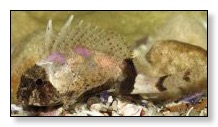
Fortescue, Centropogon australis View full size
Photographer: Aaron Payne © Aaron Payne
ww.amownline.net.au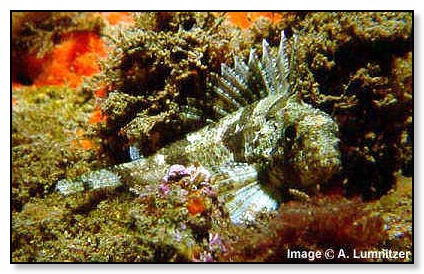
A Fortescue at a depth of 6m, La Perouse, Sydney, New South Wales, December, 1998.
Copyright © 1998 - 2005, australian museum online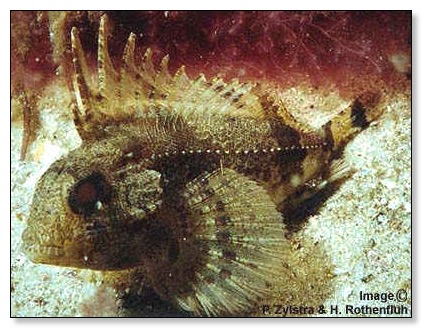
A Fortescue at a depth of 5m, Fly Point, Nelson Bay, New South Wales.
Copyright © 1998 - 2005, australian museum online
| A Taxonomic Summary of Australian Freshwater Fish |

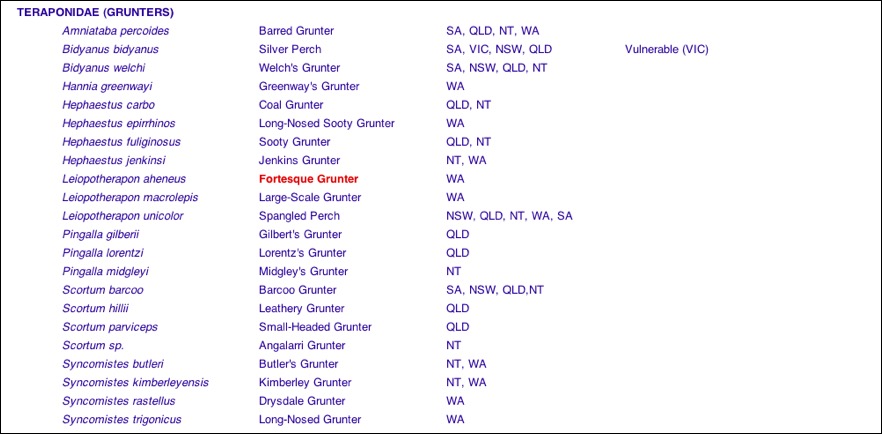
TOM BYRON PUBLISHERS PTY LTD
Australian Scuba Diving Guide Books

Camp Cove: Camp Cove dive site is situated north of the beach along the shoreline to Lady Jane Beach. It's a popular site for scuba diving schools and beginners. The best time to dive this location is on a high tide, diver stands a good chance of having reasonably clear water. Enter the dive site alongside the old wharf and swim in a northerly direction (to your right hand side) along the reef edge toward Lady Jane Beach. Along the way you will encounter many interesting sea creatures-baby sea horses, numerous mados, small bream and snapper, some blue groper, fortesques and weedy sea dragons, plus numerous other macro creatures. Stay close to shore and do not surface too far out into the harbour because sail and motor boats pass close to shore.
(www.netspace.net.au)
Red Rockcod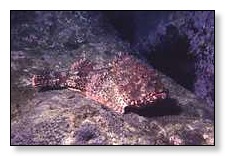
Beautiful and dangerous. Red Rockcod are a member of the scorpionfish family which includes a number of species including Stonefish and Fortesques. Members of this family have poisonous spines that can inflict considerable pain and distress to the victim. If a limb is affected the limb should be immersed in warm water to sooth the pain while medical help is sought (seek confirmation that this is the currently accepted treatment before applying). On a recent dive I found a Rockcod with a fishing hook lodged in it's mouth and some 10-15 metres of fishing line still attached. I was able to cut the line but the hook was imbedded to deep to remove. Barbless hooks are available which may help prevent this problem. It is not unusual to find fish in this state and on another dive I found a large Black Ray with thick rope tied through it's gills. Apparently fishermen put rope through the gills to make it easier to throw the rays overboard when caught in nets, the responsible fishermen loop the rope so it comes loose. I now carry sheers to cut line or rope (caution many rays have tail spines which may inflict severe injury and should be treated with care).
Notesthes robusta
Family Scorpaenidae
Joan O'Connor
Introduction
The Bullrout (Notesthes robusta) is a member of the family Scorpaenidae and is found in estuaries along the eastern seaboard of Australia (Cameron and Endean 1966). This species causes severe and debilitating pain through the secretion of venom from twin venom glands associated with spines in the dorsal, ventral and anal fins (Grant 1978). Envenomation takes place when the spines puncture flesh, when the fish is stepped on, or when anglers attempt to disengage it from nets or lines. The resultant pain is described as intense and recommended treatments include the application of heat, administration of local anesthetics and analgesics with some of the victims requiring complete sedation in hospital (Sutherland 1983). Current literature is mainly descriptive of the fish and the painful effects of envenomation. Little, if any biochemical assessment has been carried out, consequently venom constituents are poorly understood at this time.
The family Scorpaenidae includes some of the most dangerous fish known (Kizer et al. 1985) and they are described by (Edmonds 1989) as resembling the perch and likened by (Keegan and Macfarlane 1963) to the Sea Bass. They have a characteristically large armoured head with sharp venomous spines on the fins. The number of spines in the fin areas vary from 11-17 and these become erect when the fish is aroused or threatened (Edmonds 1984). These fish vary in both form and colouration taking on the predominant colours of their environment. This means Scorpaenidae in tropical waters display brilliant reds, blues and yellows, such as the Butterfly cod - and those fish who inhabit rivers and estuaries such as N. Robusta display drab dark colours (Frey 1994). Known species include : Stonefish, Fortesque, Lionfish, Firefish, and the Rock Cod.
Eastern Fortescue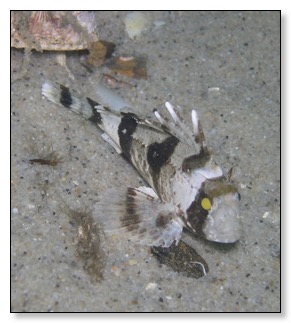
(http://www.underwater-photography.info)
Marine Envenomations
...There are lots of venomous creatures in Australia. This is intended to be a quick reference to the management of lifethreatening envenomations from these creatures...
Venom Actions
Locally acting toxins
Marine venoms commonly cause severe pain (stonefish, ray and fortescue in particular), and, if severe, ischaemia, cyanosis and necrosis.
Venomous Fish Stings and Stingray Spine Injuries
Resources for this page include "Dangerous Marine Animals of the Indo-Pacific Region" (Carl Edmonds, Wedneil Publications, 1978) and more recently "Venomous and Poisonous Marine Animals" (Williamson, Fenner & Burnett, UNSW Press, 1996), and numerous articles from the Medical Journal of Australia.
Non-tropical venomous fish in Australia inlcude catfish, stingrays and the fortescue.
(unimelb.edu)
Flying machine (Curiosité)
1926 JOHN FORTESCUE Flying Machine Patent Print![]()

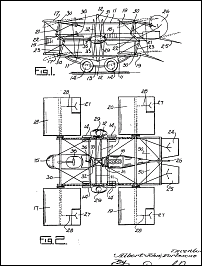
This print is a quality reproduction of the original filed patent artwork titled above. The displayed image above is a low-resolution graphic optimized for quick web display. The actual print you receive will be a detailed high-resolution print free of any defects or watermarks.
The artwork is printed in black on archival quality acid-free 8 1/2" x 11" simulated parchment stock replicating the authentic look and feel of the original patent. The actual artwork image size varies according to the original document but your print can be readily cropped to fit an 8" x 10" display frame.
This prestigious museum quality print is perfect for framing or mounting as you wish in any home or office as decorative wall art. Keep for yourself or great for gift giving to the avid collector. Great conversational piece!
Also included at no extra-charge are the remaining patent text and drawing pages (when applicable) describing this invention in detail. Most patents include a copy of the inventor's original signature (or signed by their patent attorney) on the artwork. Fascinating reading! These are not construction plans or blueprints. This print is perfect for the collector who wants historical background on the above item. Some of the text may be hard to read but the illustrations are enhanced to meet or exceed the originally submitted patent artwork design and at the same time maintaining an authentic look from that era.
![]()

Francis Urquhart Fortescue



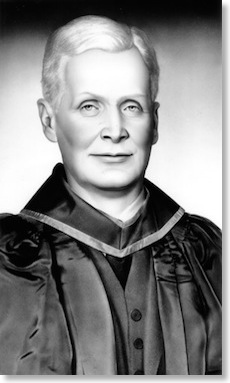 .
. 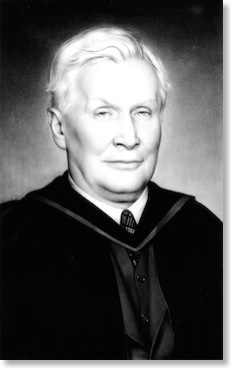
. 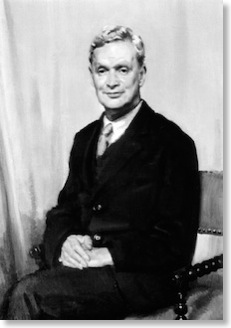 .
. 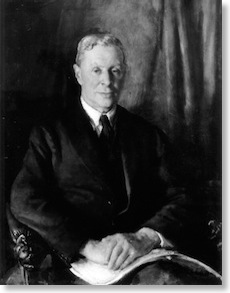

Balliol College Archives & Manuscripts
Photographs of Francis Fortescue Urquhart
This is the first of the web exhibitions not to have started as a Document of the Week, although it did have a precursor in the Kimono Tea Party article. Francis Fortescue Urquhart (1868 – 1934), son of David Urquhart and his wife Harriet Angelina Fortescue, was an exhibitioner at Balliol College 1890 - 1894 and a Fellow of the college 1896 - 1934. He was the first Roman Catholic Fellow in Oxford since the Reformation.
Until 1854, it was necessary to subscribe to the Thirty-nine Articles of Religion (i.e., to declare one's acceptance of the doctrines of the Church of England) in order to take an Oxford degree. After this bar was removed, Rome distrusted the Oxford Movement atmosphere sufficiently to issue a decree in 1867 forbidding Catholics to attend the University. This was not relaxed until 1895. However, some Catholics did come to Oxford despite the ban, including Urquhart. He remained at Stonyhurst College for an external London degree in Classics, and came up to Balliol in 1890 for a second BA in modern history. St Benet's Hall provides a brief summary of this period in the history of Catholic education at Oxford.
Urquhart lived in Balliol for nearly forty years, holding office as junior dean (1896–1907), domestic bursar (1907–19), and dean (1918–34). A conscientious but uninspiring tutor, his interests were more in art and architecture than literature or history, and he made no contributions of his own to historical scholarship. He took little part in university affairs except the development of the Oxford Catholic chaplaincy—he was instrumental in the appointment of his friend R. A. Knox as chaplain in 1926. Nevertheless, he became one of the best-known and most warmly remembered dons of his time. His main role, recalled L. E. Jones, ‘was social, not pedagogic … he appeared to have endless leisure for loitering in the Quad by day and gossiping in his rooms by night’ (Jones, 33). Late in the evening during term time his rooms above Balliol's back gate became an informal salon for undergraduates of all sorts to mix and talk. In vacations he often took a chosen few with him touring, and every summer except 1915–18 he invited groups of a dozen or so to stay with him at his father's chalet, which became known as the Chalet des Anglais. He had first taken a reading party there in 1891; in 1896 he bought the chalet from his elder brother, David Urquhart (1855–1928). It burnt down in 1906 while he was on a trip round the world, but he had it rebuilt. Between 1891 and 1931, when his health failed, he had about 300 chalet guests for a week or two of morning reading and afternoon mountain walks. About half were Balliol undergraduates, but other colleges were also well represented.
Urquhart had a slim, athletic frame, blue eyes, and a handsome, smooth face with heavy, slightly pouting lips; his hair was thick and curly—light brown in youth, white later. The nickname Sligger, by which he was generally known after about 1892, was derived from ‘sleek one’ through ‘slicker’. He liked handsome young men, and photographing them, but was probably celibate. Only one special relationship is evident, with Stephen Hewett (1893–1916), whose letters from the trenches he edited for publication. Walter Pater may have used Urquhart as the model for some features of the subject in Emerald Uthwart (1892). Anthony Powell, a pupil of Urquhart's, placed his recurrent character Sillery in a setting based on Urquhart's salon, but denied otherwise drawing on him.
Urquhart died of lung disease in Oxford on 18 September 1934 and is buried in Wolvercote cemetery. He left the Chalet des Anglais to his Balliol friend R. A. B. Mynors, who in turn bequeathed it to a trust. It is still used for undergraduate reading parties from Balliol, New and University Colleges.
FFU's entry in the Oxford Dictionary of National Biography, written by Dr John Jones, is available online by subscription. His father David Urquhart is also in the ODNB and his uncle Chichester Samuel Parkinson-Fortescue, Baron Carlingford and second Baron Clermont.
http://archives.balliol.ox.ac.uk/Exhibitions/exhib09f.asp
CH1.2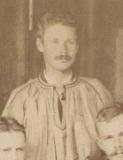
CH1.7
CH1.34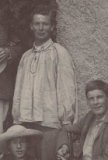
CH1.41
FFU7.59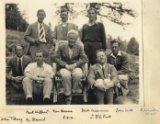
CH2.70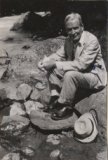
CH2.84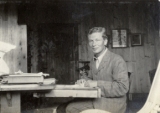
FFU 6.40, 1912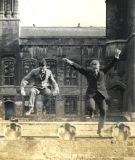
FFU 6.54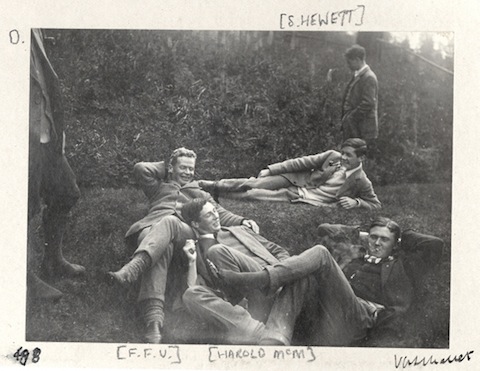
FFU with Harold Macmillan, at the Chalet, July 1913 (FFU 6.55, 57)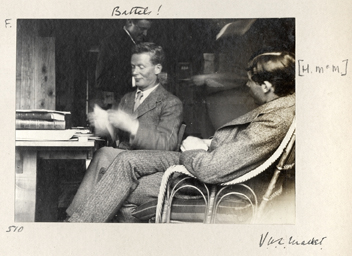
FFU with Harold Macmillan, at the Chalet, July 1913 (FFU 6.55, 57)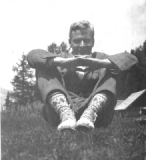
FFU 8.29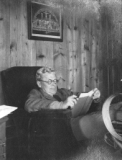
FFU 9.29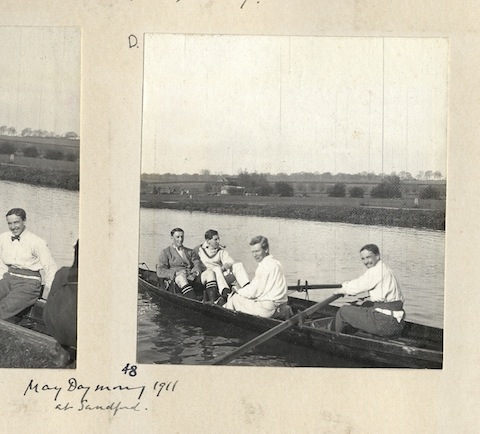
FFU 6.5, May Day 1911
FFU6.7, spring 1911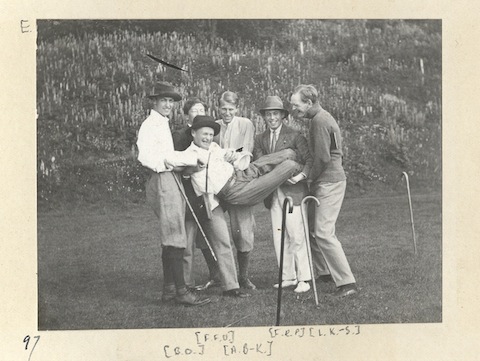
FFU6.10, July 1911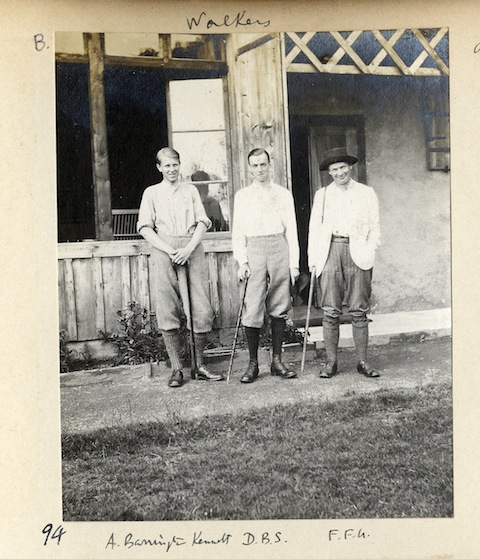
FFU6.10, 1911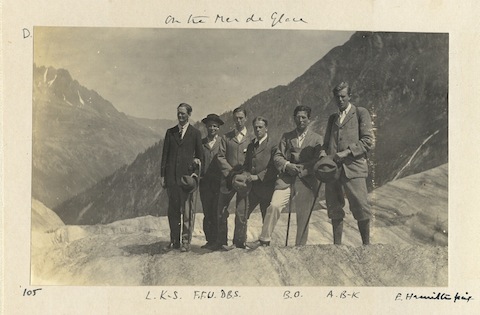
FFU 6.11, 1911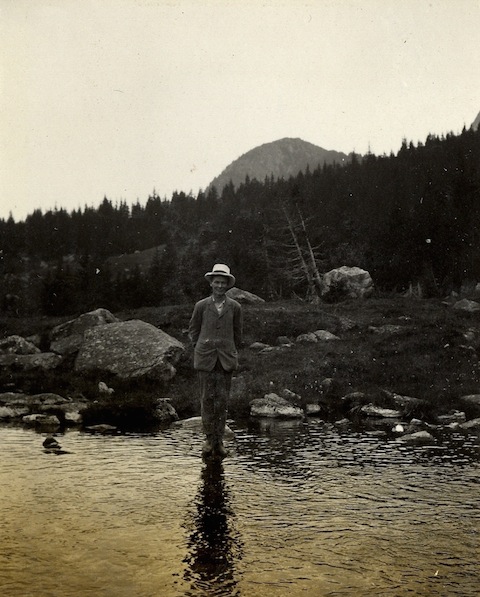
FFU 6.39, 1912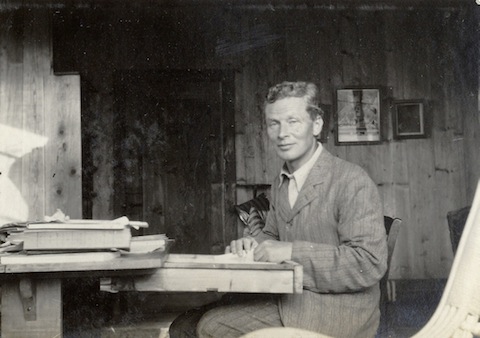
FFU 6.40, 1912
FFU 6.44, Studland, Sept 1912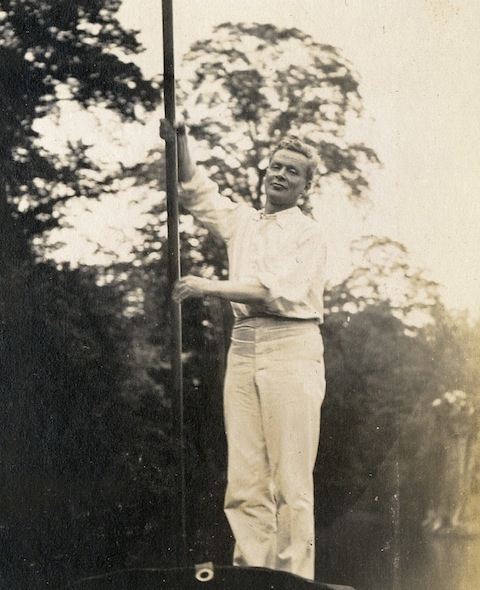
FFU 6.53, summer 1913
FFU 6.54, 1913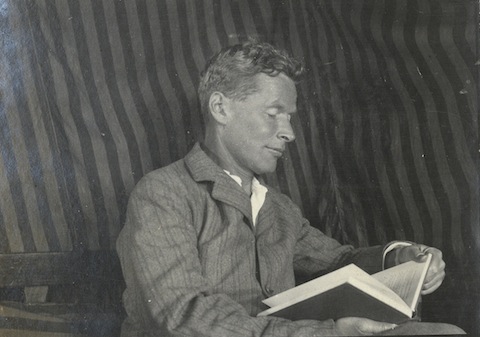
FFU 6.56, 1913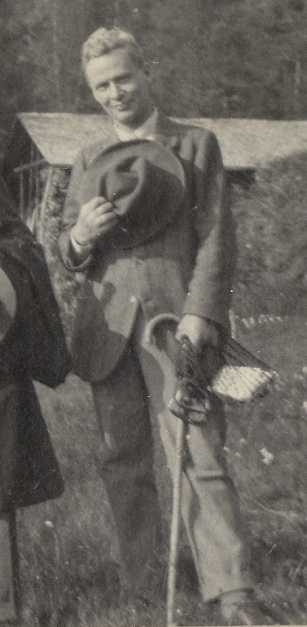
FFU 6.57, 1913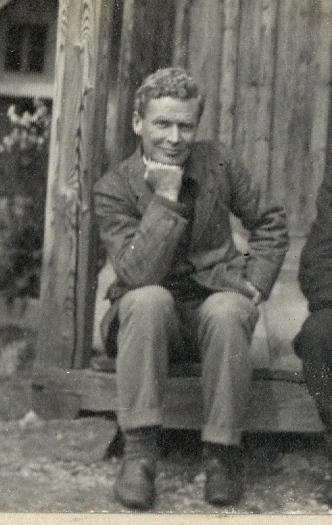
FFU 6.59, 1913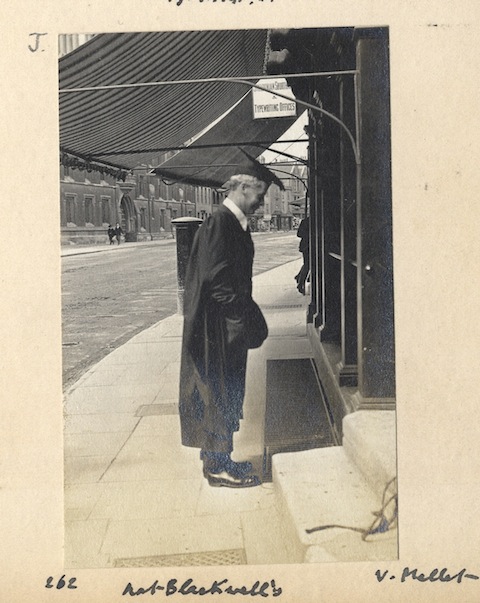
FFU 7.28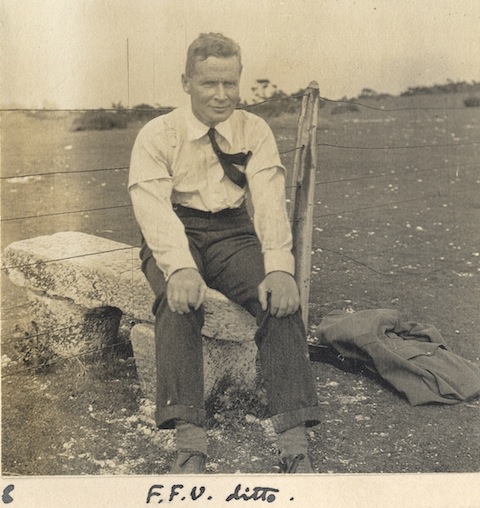
FFU 7.32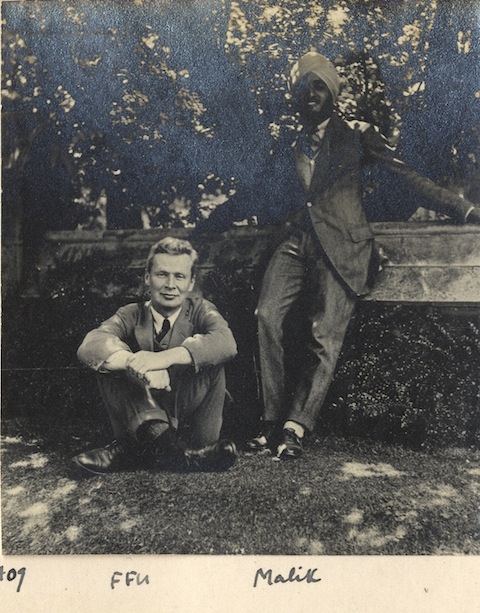
FFU 7.44
FFU 7.44
FFU 7.48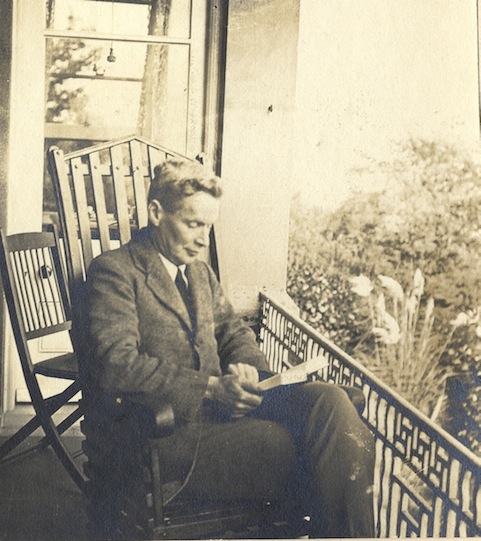
FFU 7.48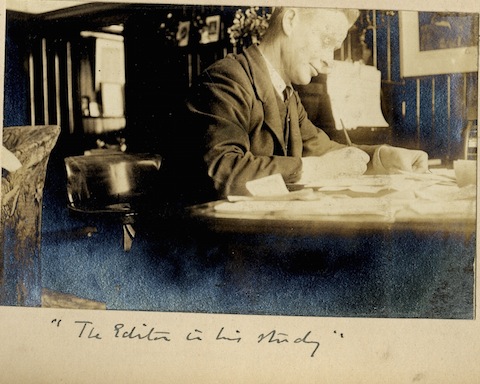
FFU 7.49
FFU7.51
FFU7.52
FFU 7.54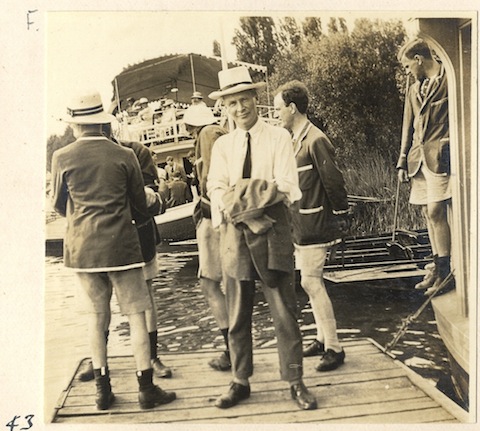
FFU 8.6
FFU 8.17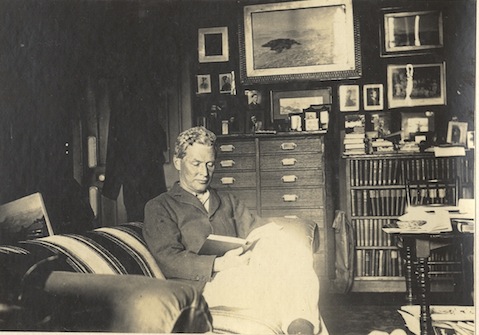
FFU 8.24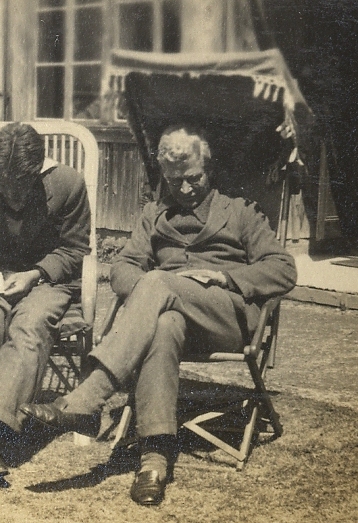
FFU 8.52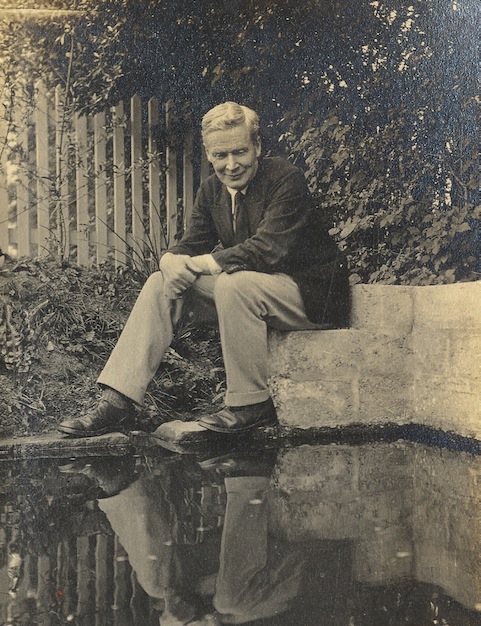
FFU 8.66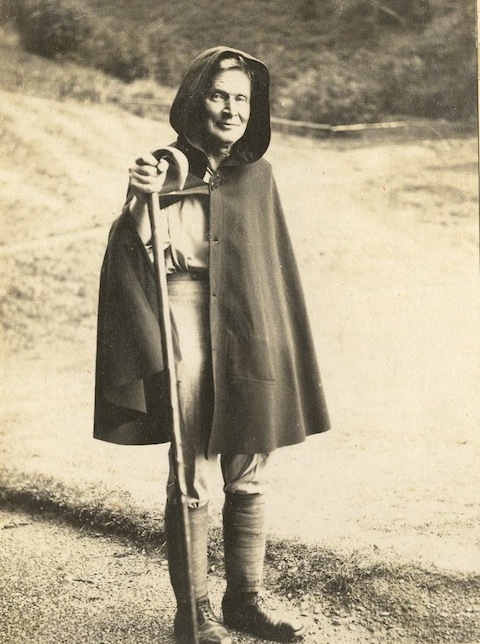
FFU 11.8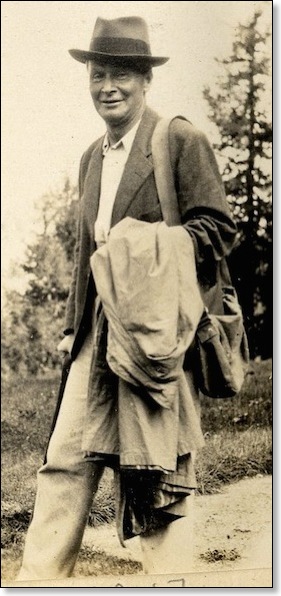
FFU 11.8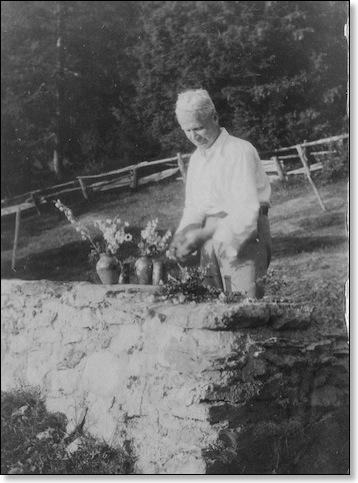
FFU 11.28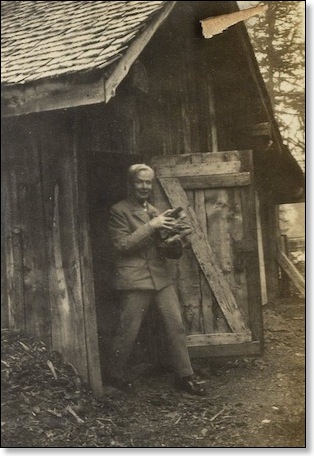
FFU 11.53

Florence Fortescue

Very rare original acrylic on canvas painting by English artist Janet Butler (1961-date) entitled humorously 'Blue Moon'. The painting is signed in the lower right corner 'Florence 2002' and was painted under the artists pseudonym 'Florence Fortescue'.
Painting depicts female rear in impressionist style in vivid blue on blue tones.
Canvas size 20" wide x 16" high.
To date works by this artist have not been available for sale to the general public, however we have been able to acquire several pieces by this talented contemporary artist, please watch for our other upcoming sales of both rare and emerging art.
This painting has not to date been reproduced commercially and copyrights are still held by the artist. This option may be available to the winning bidder upon further negotiations.
Please note that actual colours on this painting may not be exactly as shown in the digital images that you see on your computer monitor, however we do endeavour to represent our items as accurately as possible. For further information please email the seller.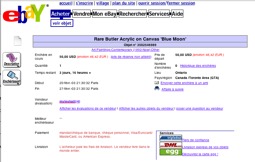

Football League Fortescue (Sport)
WESTERN AUSTRALIA
Westar Rules
Westar
East Fremantle
West Perth
East Perth
Subiaco
Claremont
South Fremantle
Swan Districts
Perth
Peel Thunder
Fortescue National Football League
Tigers
Townsite Eagles
Panthers
Saints

Fingers Fortescue Tennis (Sport)
Posted: Tuesday July 06, 1999 10:48 AM
Sports Illustrated's Jon Wertheim takes a weekly look at who's hot and who's not in the tennis world.
AD IN
Pete Sampras: Consider: But for a shaky match against Richard Krajicek three years ago, best player in his generation could have won SEVEN straight Wimbledons.
Lindsay Davenport: 15-1 underdog at the start of the tournament fails to drop a set in two weeks. New No. 1 (and, for good measure, Wimbledon doubles champ), now embarks on hard-court circuit, her favorite stretch of the year.
Steffi Graf: If this was indeed her last Wimbledon, there's no shame in getting to the finals at age 30.
Leander Paes and Mahesh Bhupathi: Add Wimbledon doubles title to go with the French Open crown they won last month.
Alexandra Stevenson: Handles bizarre week with poise and aplomb uncommon for an adult, much less for an 18-year-old.Pat Rafter: The game's most picturesque serve-and-volleyer conspicuously improves play on grass and reaches semifinals.
AD OUT
Tennis fans: Boris Becker's exit, that we were prepared for. But Graf's retirement announcement, if vague, put a damper on what was otherwise an unsurpassing day for tennis.
Boris Becker: Pixie dust wears off in hard-on-the-eyes fourth-round rout by Rafter.
Samantha Stevenson: Strange that a mother who's never been shy about chronicling her daughter's career (starting at age four), suddenly turns into a "no comment" machine when peppered with tough questions.
John McEnroe: Doesn't get to live out middle-aged fantasy and win another Wimbledon title. Despite Mac's beseeching, mixed-doubles partner Graf withdraws the team after a thoroughly entertaining first few matches.
Mark Philippoussis/Australia's Davis Cup aspirations: Up a set to Sampras, game's most penetrating server suffers a knee injury and may be out for months.
Say, didn't you used to be Fingers Fortescu?
Click here to send a question or comment to Jon Wertheim's Tennis Mailbag.
...("Stuffy") $4,000 Who is Fingers Fortescu? ...

Freddie Fortesque (Theatre)
About the Cast
Frank Robinson, Jr. ( Noel Coward / Arthur ) Washington, DC: Freddie Fortesque Farmer/Lord Henry/Kathleen Willy-Nilly, "The Very Model of a Major Merry Music Hall", Interact; Uncle Pumplechook, "Great Expectations: the Musical", Interact; George, "Sherlock Holmes and the Purloined Patience", Interact; Captain Claret, "White Jacket: the Musical", The Navy Museum; Abbot, "On Sitting On", The Source Theatre Festival; Radon, "Jeff and the Intruders", The National Children's Theatre for the Environment. Regional: Friar Lawrence, "Romeo and Juliet", The Maryland Shakespeare Festival; Bob Crachit, "A Christmas Carol", The Nebraska Theatre Caravan; Noah Curry, "110 In the Shade", The Nebraska Theatre Caravan; Fabian, "Twelfth Night", The Maryland Shakespeare Festival; Angelo, "The Comedy of Errors", The Maryland Shakespeare Festival; St. George, "The Reluctant Dragon", Birmingham Children's Theatre; The Imperial Physician, "The Nightingale", Birmingham Children's Theatre; The White Rabbit, "Alice: A Curious Adventure", The Nebraska Theatre Caravan. Motion Pictures: Airman Land, "Invader", The Very Big Motion Picture Corporation.


